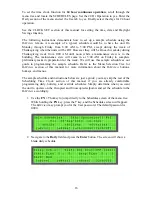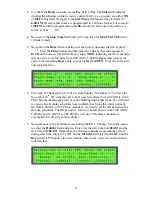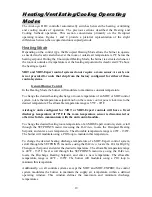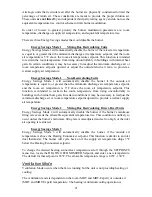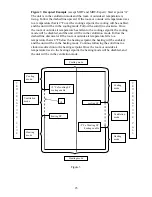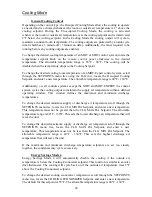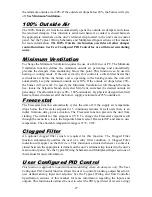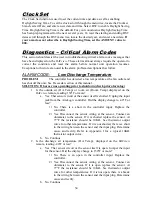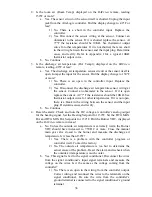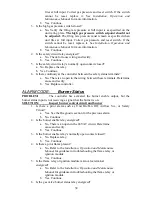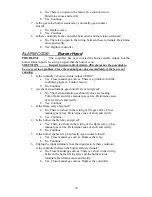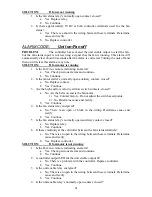
30
Reverse Acting
The controller output AO-1 is modulated by a
PID
loop from 0% to 100% based on the
User Control setpoint and the input signal to IN-2. As the input signal increases the
output voltage decreases. Additionally, a secondary control acts to override the
PID
loop
to scale the output as follows.
If the input variable equals the User Control setpoint, the output will be determined by
the
PID
loop. In this situation the override has no effect on the output value.
If the input variable is above the User Control setpoint, the output
could
decrease from
100% to 0% as the input variable increases from the User Control setpoint to the Max
User setpoint. In this situation the output value is the lesser of the
PID
output or the
override output.
If the input variable is below the User Control setpoint, the output
could
increase from
0% to 100% as the input variable decreases from the User Control setpoint to the Min
User setpoint. In this situation the output value is the greater of the
PID
output or the
override output. See the following example.
Assume the user wishes to control the fan speed using a variable frequency drive (VFD).
The VFD input is 0-10Vdc. The control variable will be building pressure. As the
building pressure increases, the fan speed should decrease. The building pressure
transducer has a range of –0.1” to +0.1”. The user would like the building pressure to be
+0.03” but does not want it to drop below 0.0” or go above +0.05”. The parameters
entered on the keypad display will be:
PID Select
Reverse (as input increases output decreases)
High Input Val
0.10
Low Input Val
-0.10
User Ctrl SP
0.03
Max User SP
0.05
Min User SP
0.00
.05” 0%
override
scaler
.03” 100%
Max User SP
.03” PID 0-100%
Min User SP
User Ctrl SP
>
=
<
0-100%
Output
.03” 0%
override
scaler
.00” 100%
Input >
.03”
?
Input <
.03”
?

